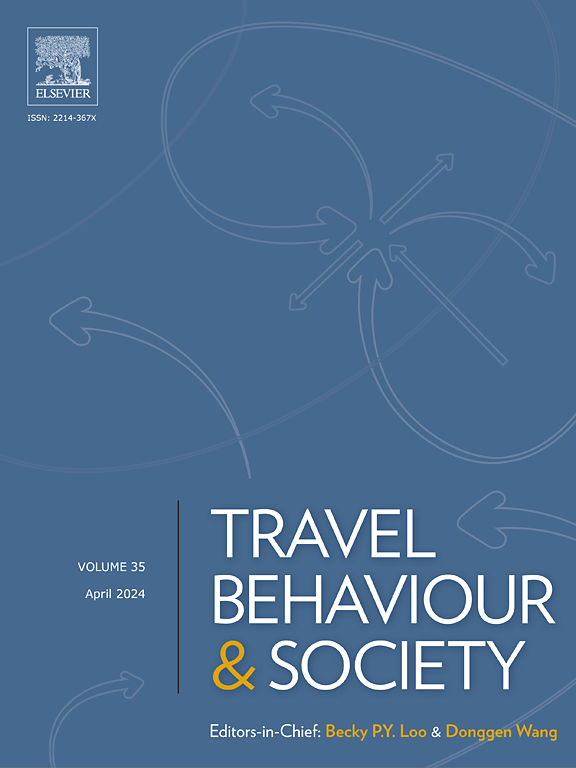Measuring transit areas of influence via amenity change
IF 5.7
2区 工程技术
Q1 TRANSPORTATION
引用次数: 0
Abstract
The influence area of transit-oriented development (TOD) is a spatial area where transit stations significantly influence land use and development, guiding decisions related to private and public investments and services within TOD. This range is typically defined using rules of thumb or pedestrian-based measures, which do not directly reflect changes in investment and development and thus may not accurately capture the true areas of TOD’s influence on the surrounding urban environment. Studies have shown the close relationship between amenity and investment and development. This study introduced amenity change as a novel metric for measuring land use and development shift induced by TOD, thus quantifying TOD influence areas. Using spatial panel models, the study assessed the spatial spillover effects of transit stations on amenity changes and developed an algorithm to delineate the local spillover range for each station as TOD influence areas. Shenzhen, a leading example of the “rail + property” development model in China, served as the case study. The findings reveal that subway stations exhibit significant direct and spillover effects on amenity distribution, with a distance-decay pattern; TOD influence typically extends up to 1.25 km from stations. Besides, TOD influence areas, delineated by observed amenity changes, can be clustered into three distinct zones—core, surrounding, and outer—that align with Shenzhen’s spatial structure. Moreover, core zones exhibit a high concentration of advanced amenities such as professional, healthcare, and finance services; outer zones show limited amenity growth, while surrounding zones demonstrate strong development potential. This study provides a transferable approach for defining TOD influence areas from a socio-spatial transformation perspective, while also highlighting the importance to incorporate spatial justice and targeted regulatory measures into TOD planning and governance.
通过改善环境来衡量交通影响区域
交通导向发展(TOD)的影响区域是一个空间区域,其中交通站点显著影响土地利用和开发,指导TOD内与私人和公共投资和服务相关的决策。这个范围通常是用经验法则或以行人为基础的方法来定义的,这些方法不能直接反映投资和开发的变化,因此可能无法准确地捕捉TOD对周围城市环境影响的真实区域。研究表明,舒适与投资开发之间存在着密切的关系。本研究引入舒适度变化作为衡量TOD引起的土地利用和发展转变的新指标,从而量化TOD影响区域。利用空间面板模型,评估了交通站点对舒适性变化的空间溢出效应,并提出了一种算法,将每个站点的局部溢出范围划分为TOD影响区域。深圳作为中国“铁路+房地产”发展模式的典范,被作为案例研究。结果表明:地铁站点对城市舒适度分布具有显著的直接和溢出效应,且存在距离衰减效应;TOD的影响范围通常从站点延伸至1.25公里。此外,TOD影响区域,通过观察到的舒适性变化,可以聚集成三个不同的区域-核心,周围和外部-与深圳的空间结构相一致。此外,核心区高度集中了专业、医疗和金融服务等先进设施;外围区域的舒适性增长有限,而周边区域则显示出强大的发展潜力。这项研究为从社会空间转型的角度定义TOD影响区域提供了一种可转移的方法,同时也强调了将空间正义和有针对性的监管措施纳入TOD规划和治理的重要性。
本文章由计算机程序翻译,如有差异,请以英文原文为准。
求助全文
约1分钟内获得全文
求助全文
来源期刊

Travel Behaviour and Society
TRANSPORTATION-
CiteScore
9.80
自引率
7.70%
发文量
109
期刊介绍:
Travel Behaviour and Society is an interdisciplinary journal publishing high-quality original papers which report leading edge research in theories, methodologies and applications concerning transportation issues and challenges which involve the social and spatial dimensions. In particular, it provides a discussion forum for major research in travel behaviour, transportation infrastructure, transportation and environmental issues, mobility and social sustainability, transportation geographic information systems (TGIS), transportation and quality of life, transportation data collection and analysis, etc.
 求助内容:
求助内容: 应助结果提醒方式:
应助结果提醒方式:


